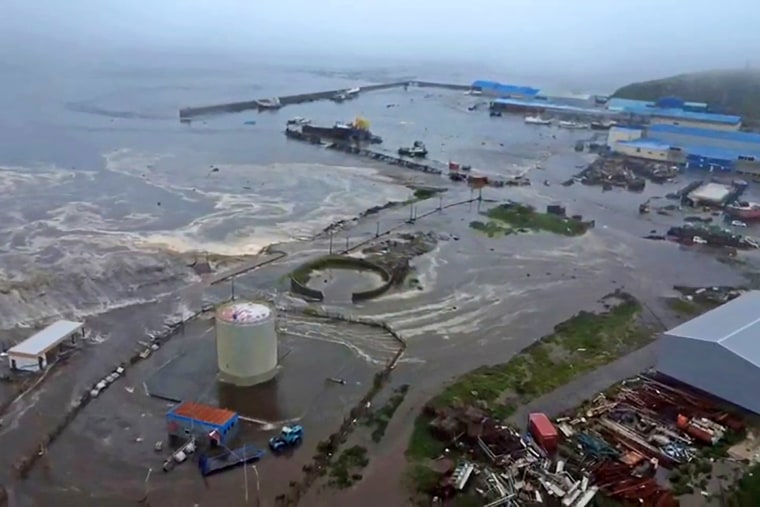Russia Tsunami news: Tsunami effects seen after earthquake in Chile.
Discover details about the powerful 8.8-magnitude earthquake that triggered a 4-meter Russia Tsunami in Kamchatka, causing damage and alerts across Japan, the US, and the Pacific. Learn about its impact and global reach.

Understanding the Russia Tsunami: A Major Event
Early on Wednesday, a powerful 8.8-magnitude earthquake struck Russia’s remote Kamchatka Peninsula, triggering a significant Russia Tsunami with waves reaching up to 4 meters (13 feet). This seismic event marked one of the most intense tremors to hit the region in decades, causing widespread concern and immediate responses across the Pacific.
The Initial Impact and Magnitude
The earthquake, one of the strongest to impact Russia’s Far East, set off a chain of events that led to the Russia Tsunami. Its sheer force was immediately felt, leading to both local devastation and far-reaching alerts.
Kamchatka Peninsula: Epicenter of the Tremor
The epicenter of this massive earthquake was situated approximately 119 kilometers (74 miles) from Petropavlovsk-Kamchatsky, a Russian city on the Kamchatka Peninsula with a population of 180,000 residents. This proximity placed a significant urban center relatively close to the source of the impending Russia Tsunami.
Immediate Aftermath: Tsunami Waves and Damage
The resulting Russia Tsunami caused structural damage to buildings and prompted immediate evacuation warnings across parts of Japan and the United States, highlighting the widespread impact of the disaster. In certain sections of Kamchatka, tsunami waves were recorded measuring between three and four meters (ten to thirteen feet), demonstrating the varied intensity of the Russia Tsunami across coastal areas.
Regional Alerts and Global Reach
The seismic activity and subsequent Russia Tsunami had ripple effects across the Pacific, leading to alerts and warnings far beyond Russia’s borders.
Pacific Rim on High Alert
The Japan Meteorological Agency reported a 30-centimeter (approximately 1 foot) tsunami wave in Nemuro, on Hokkaido’s eastern coast, underscoring the Russia Tsunami‘s reach. The tremors generated a tsunami that extended across the northern Pacific region.

International Warnings and Preparations
Following the Russia Tsunami, alerts were swiftly issued for coastal parts of Alaska, Hawaii, Chile, the Solomon Islands, and extending south toward New Zealand. Concerns were particularly high for some Ecuadorian coastal regions, where waves were anticipated to exceed three meters (yards), requiring urgent preparedness measures.
Eyewitness Accounts and Local Impact
The human element of the Russia Tsunami and its preceding earthquake was captured through official statements and on-the-ground reports.
Governor’s Statement: A Decades-Worst Event
Kamchatka Governor Vladimir Solodov described the event via a Telegram messaging app video, stating, “Today’s earthquake was bad and the worst in decades of tremors.” He further revealed the devastating impact, noting that “A kindergarten was destroyed by intense shaking,” underscoring the severity of the Russia Tsunami‘s precursor and its immediate consequences for local communities.
Destruction in Severo-Kurilsk and Beyond
Valery Limarenko, the local governor, confirmed that the initial Russia Tsunami wave directly impacted Severo-Kurilsk, a key town on Russia’s Kuril Islands in the Pacific. This direct hit caused significant damage, adding to the destruction observed in other affected areas of the Kamchatka Peninsula.
The Aftermath and Future Preparedness
The Russia Tsunami serves as a stark reminder of the unpredictable power of nature. Authorities are now assessing the full extent of the damage and focusing on recovery efforts, while also reviewing and enhancing early warning systems to mitigate the impact of future seismic and tsunami events in the region and across the Pacific.





